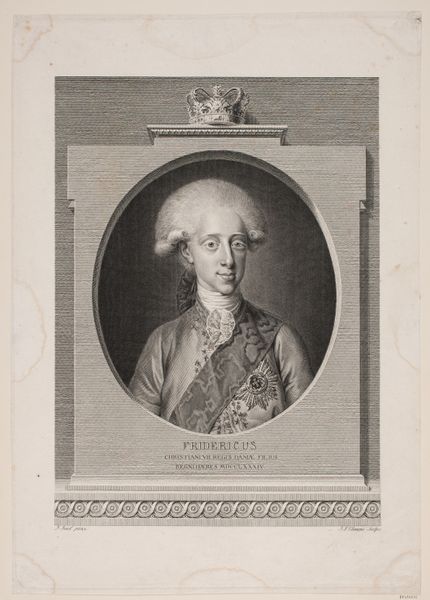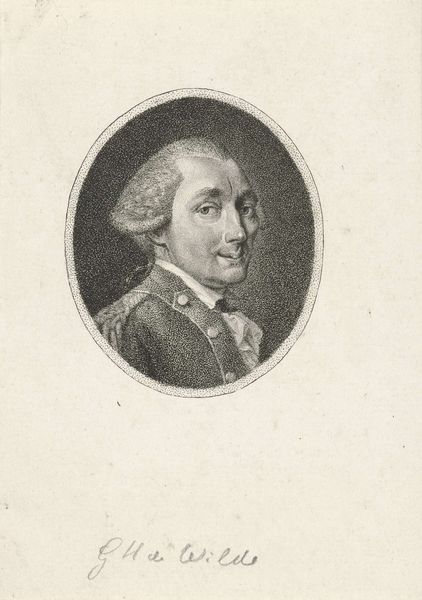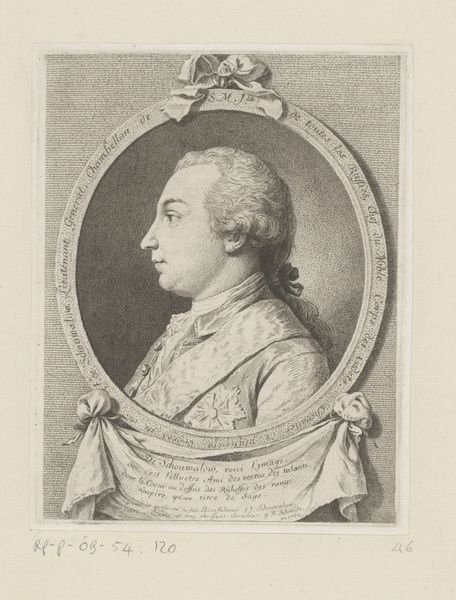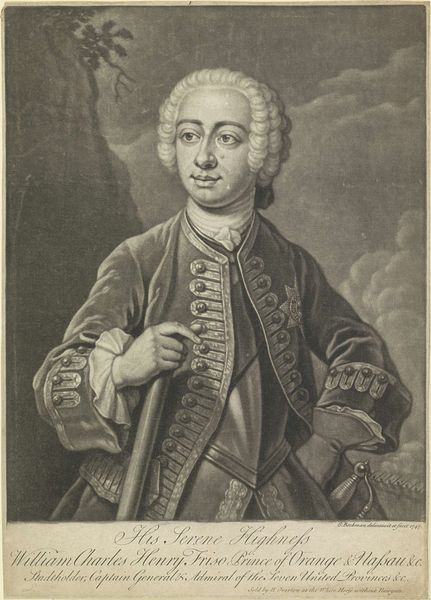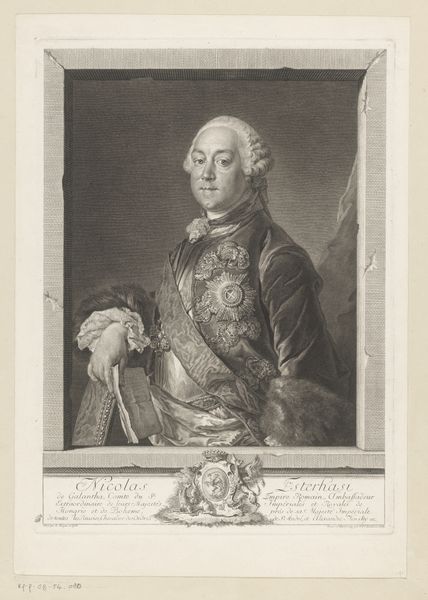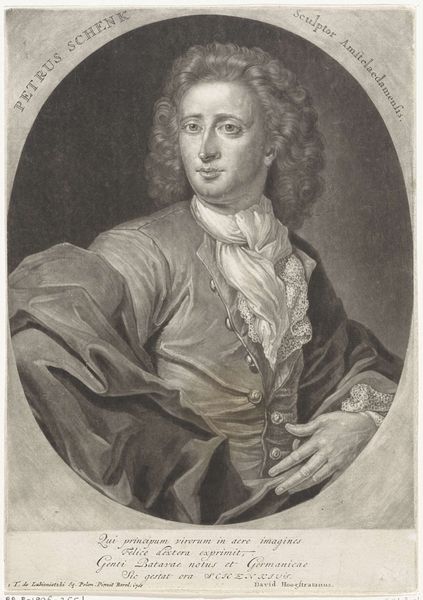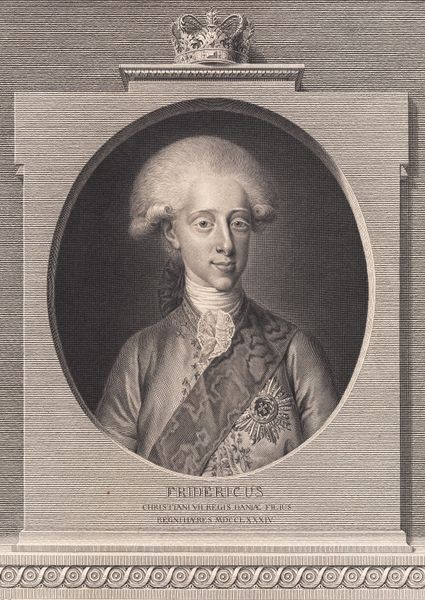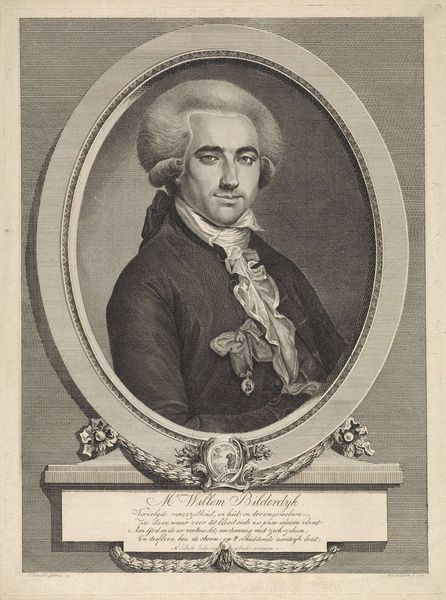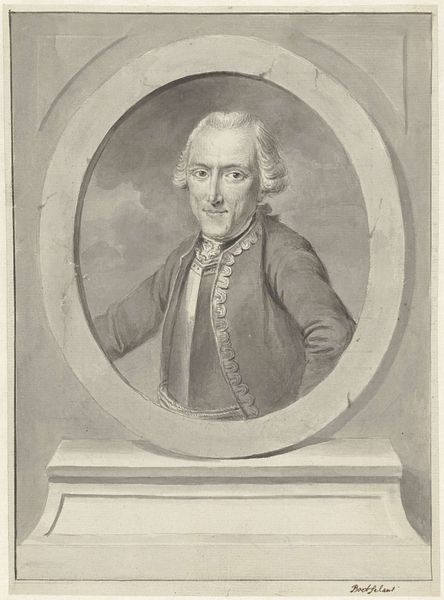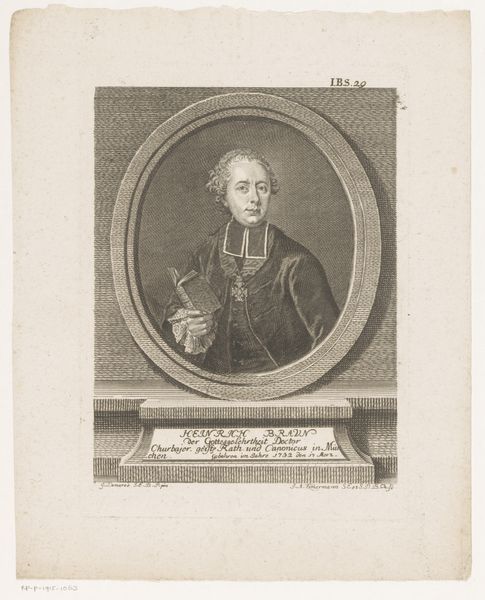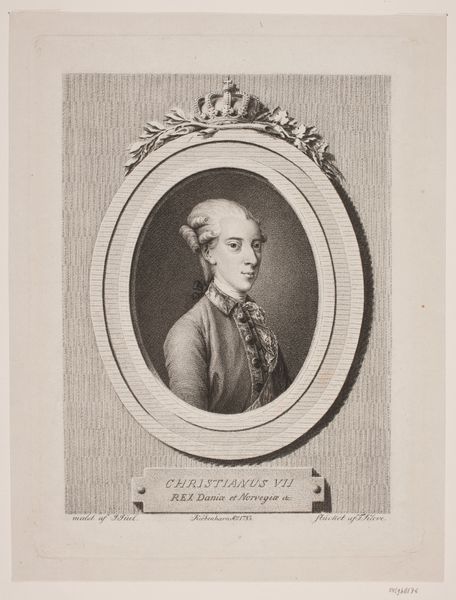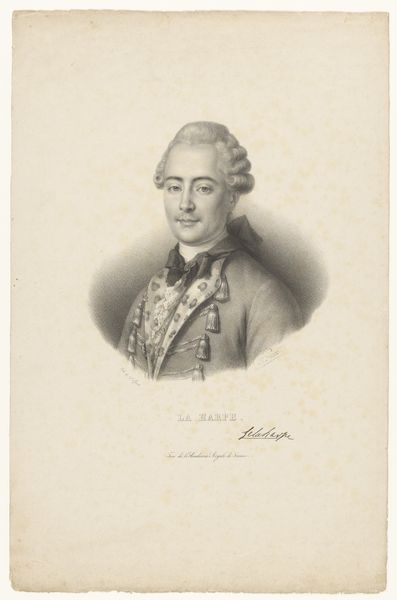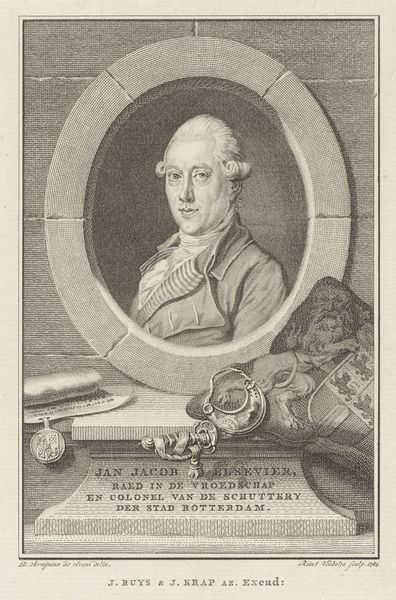
print, engraving
#
portrait
# print
#
portrait reference
#
portrait drawing
#
history-painting
#
engraving
Dimensions: 138 mm (height) x 113 mm (width) (bladmaal)
Editor: Here we have a portrait of Frederik VI as Crown Prince by Herman Rudolf Müller, dated between 1856 and 1935. It’s an engraving, isn’t it? I’m immediately struck by how it uses established, historical visual language, in terms of costume and pose, to reinforce a specific image of power. What do you make of its historical context? Curator: That's a keen observation! Engravings like these, particularly portraits, were often commissioned or circulated to reinforce a specific narrative or consolidate power. Considering the later date ascribed to the work, 1856-1935, relative to the subject's life, do you think it idealizes Frederik, creates a sort of nostalgic representation of monarchy, or possibly is a later commemorative piece to burnish a historical figure’s public perception? How might this influence our reading of the piece? Editor: Hmm, good point. Thinking about the production date, perhaps it speaks to a broader movement trying to reconcile traditional notions of royalty with emerging political ideas. It's not just about representing a person but projecting an entire historical understanding. But how does the *act* of printmaking influence its role as public imagery? Curator: The reproductive nature of printmaking is absolutely key. Think about the accessibility and the audience; an engraving allows for widespread distribution. Images like this could be reproduced in books, pamphlets, or even sold as individual prints, solidifying that idealized representation amongst a broader population. These pieces are essentially building consensus around specific political ideals and, frankly, visually managing a brand. Editor: So, it’s less about individual artistic expression and more about mass communication for political reasons? I hadn’t fully considered that. Thanks. Curator: Precisely. And this reminds us to be critical of seemingly straightforward imagery; art is seldom just *art*. This piece helps us consider how political and social contexts actively shape what art is and how we read it.
Comments
No comments
Be the first to comment and join the conversation on the ultimate creative platform.
